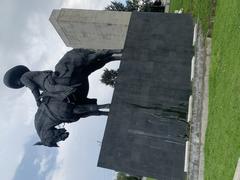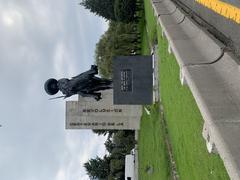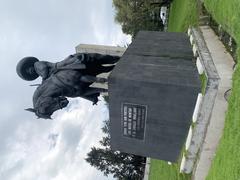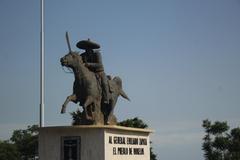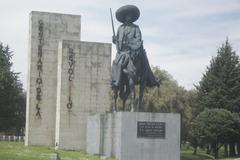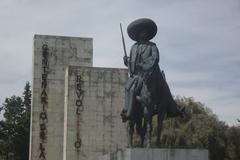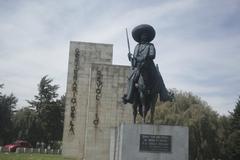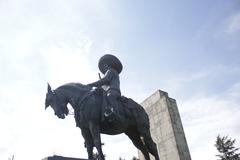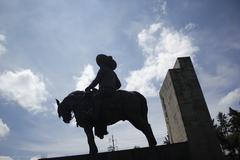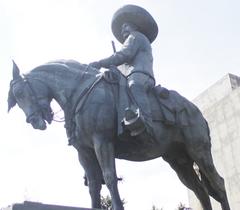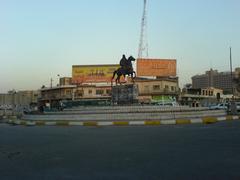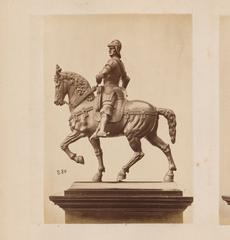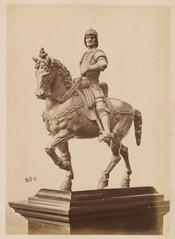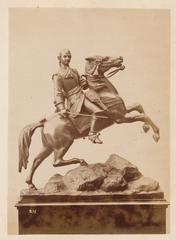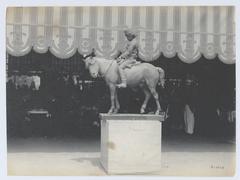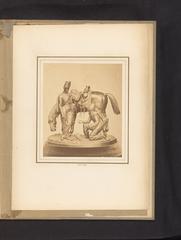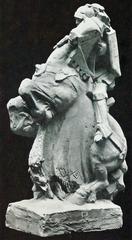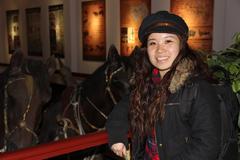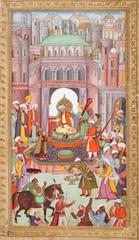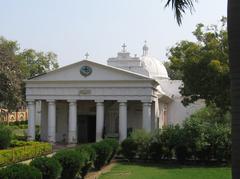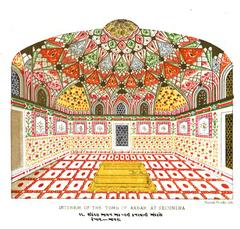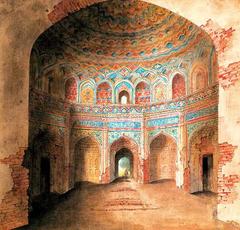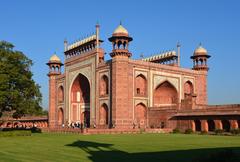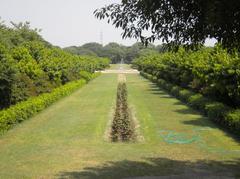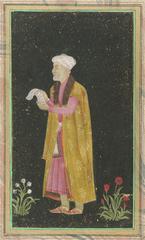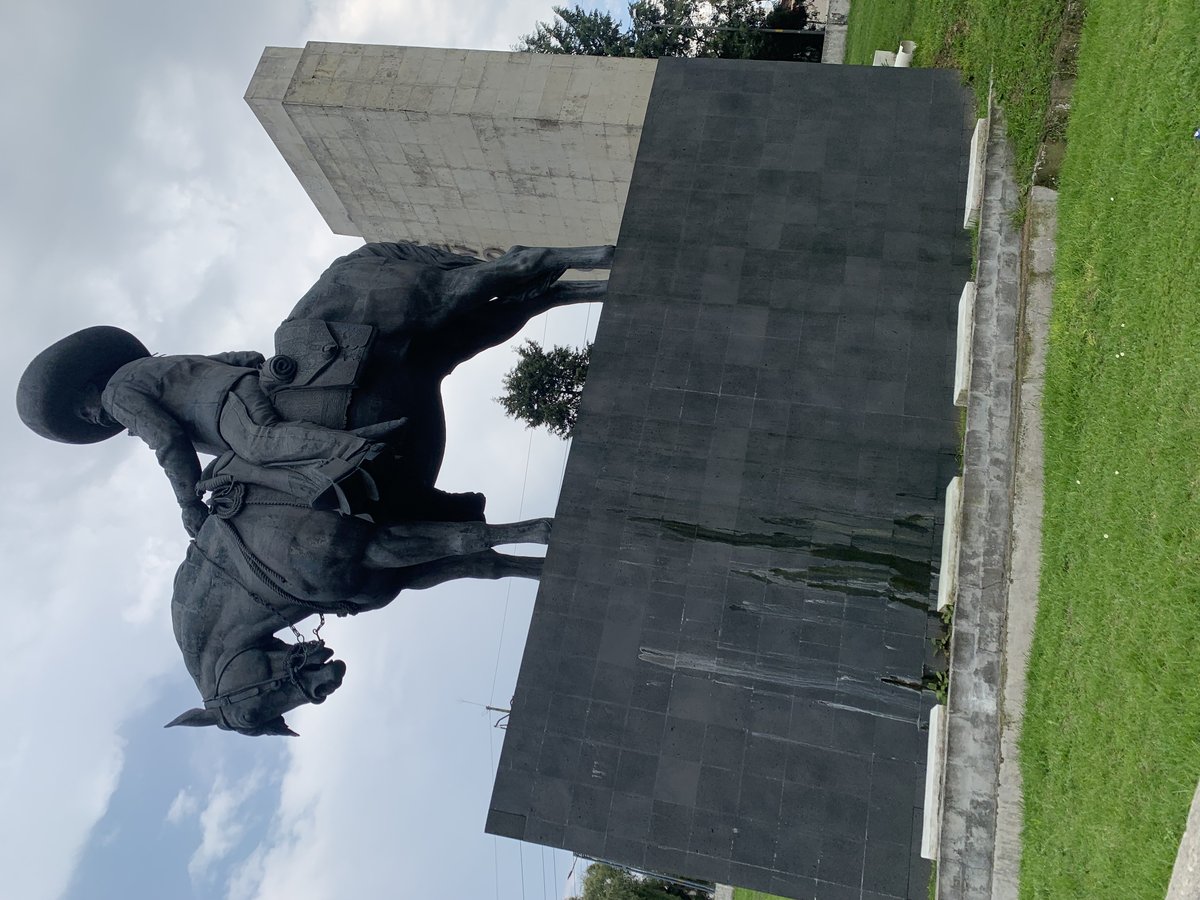
Equestrian Statue in Agra: Visiting Hours, Tickets, and Comprehensive Travel Guide
Date: 14/06/2025
Introduction
Agra, famed globally for the Taj Mahal and Agra Fort, also boasts a collection of remarkable equestrian statues that enrich its historical landscape. These statues, depicting prominent figures mounted on horseback, stand as enduring tributes to leadership, valor, and the city’s multifaceted cultural heritage. Whether you are a history enthusiast, an art lover, or a traveler seeking to explore beyond Agra’s iconic monuments, this detailed guide will help you uncover the significance, artistic features, and practical aspects of visiting equestrian statues in Agra.
For more on Agra’s broader cultural context, see resources like Special Places of India, Travel Earth, and The Imperial Tours.
Contents
- Historical Background
- Equestrian Statues in Indian and Mughal Tradition
- Notable Statues in Agra
- Artistic and Symbolic Features
- Cultural Significance
- Symbolism in Indian Culture
- Commemorative Role and Identity
- Festivals, Education, and Public Engagement
- Conservation Efforts
- Visitor Information
- Location and Accessibility
- Visiting Hours and Tickets
- Best Times to Visit & Etiquette
- Nearby Attractions and Tips
- FAQs
- Conclusion
- Sources
Historical Background
Equestrian Statues in Indian and Mughal Tradition
Equestrian statues have a deep-rooted presence in Indian art and culture, where horses symbolize nobility, power, and spiritual significance. This tradition, tracing back to ancient temple art, was further developed during the Mughal era, when emperors and regional rulers used monumental statuary to assert their authority and immortalize their military achievements (marbleism.com).
While the tradition of equestrian statuary originated in ancient Greece and Rome (Ancient Origins), India adapted it to commemorate both historical figures and deities, blending martial and spiritual heritage (European Bronze).
Notable Equestrian Statues in Agra
Agra features several significant equestrian statues, primarily honoring leaders who shaped the city and region’s destiny. Key examples include:
- Chhatrapati Shivaji Maharaj: A dynamic depiction emphasizing Maratha valor and resistance, often found at prominent city intersections.
- Maharana Pratap: A symbol of Rajput pride and defiance, celebrated for his opposition to Mughal expansion.
- Other Regional Leaders: Depending on location, you may encounter statues commemorating local heroes and freedom fighters, each with unique historical context.
Many of these statues are situated in easily accessible public spaces near major historical sites, allowing visitors to seamlessly integrate them into their Agra itinerary (Mapcarta).
Artistic and Symbolic Features
Typically cast in bronze or stone, equestrian statues in Agra are noted for their imposing scale and intricate detailing. The horse’s posture often carries symbolic meaning—rearing horses may signify a death in battle, while grounded horses suggest natural death (marbleism.com). Riders are depicted in regal attire or military uniform, often holding a sword or symbol of authority.
The statue’s base usually features plaques or reliefs narrating the achievements of the honored figure. Landscaping, such as gardens or fountains, often surrounds the monument, providing a contemplative space for visitors (Visual Arts Cork).
Cultural Significance
Symbolism in Indian Culture
Horses in Indian tradition represent vigor, speed, and nobility, frequently associated with royal processions, religious rituals, and mythological narratives. In Hindu mythology, horses are linked with the sun god Surya and the divine Ashvins, reinforcing their celestial and martial stature (European Bronze).
Commemorative Role and Identity
Equestrian statues in Agra serve as collective memory sites, honoring past leaders and reinforcing regional pride. They are often focal points for public ceremonies, educational tours, and community gatherings, helping to transmit historical narratives to future generations.
Festivals, Education, and Public Engagement
These monuments are integrated into the city’s cultural life—serving as backdrops for festivals like the Taj Mahotsav, rallying points for parades, and venues for heritage walks (theimperialtours.com). Informational plaques and guided tours provide educational value, while school trips and local events foster civic engagement.
Conservation Efforts
Heritage organizations and municipal authorities undertake regular maintenance and restoration, employing protective coatings and surveillance to safeguard statues from environmental damage and vandalism (marbleism.com). Community initiatives and awareness campaigns encourage public stewardship.
Visitor Information
Location and Accessibility
Most equestrian statues are positioned in central public parks, roundabouts, or near key landmarks like Agra Fort and city thoroughfares. Access is free, and the spaces are generally open year-round. Pathways around the statues are usually paved and pedestrian-friendly, though visitors with mobility challenges should check for ramps or accessible routes in advance (Travel With CG).
Visiting Hours and Tickets
- Hours: Statues in public spaces are accessible throughout the day; daylight hours (6 AM to 6 PM) are recommended for safety and comfort.
- Entry Fee: Visiting is free—no tickets required.
- Guided Tours: Many city tours include stops at equestrian statues, offering historical context and interpretation. Self-guided app tours are also available.
Best Times to Visit & Etiquette
- Season: October to March offers the most pleasant weather for sightseeing (Asia Highlights).
- Time of Day: Early mornings and late afternoons provide optimal lighting for photography and cooler temperatures.
- Etiquette: Do not climb on or touch the statues; respect signage and barriers. Modest dress is advised, and always dispose of litter responsibly.
Nearby Attractions and Tips
Combine your visit to equestrian statues with Agra’s highlights:
- Taj Mahal: A short distance away, open from sunrise to sunset except Fridays.
- Agra Fort: UNESCO World Heritage Site, open 6:00 AM–6:00 PM.
- Mehtab Bagh: Ideal for sunset views.
- Local Bazaars: Sadar Bazaar and Kinari Market for shopping.
- Paliwal Park and Taj Nature Walk: Offer green space and scenic walks (Living Nomads).
Travel Tips:
- Carry water, sun protection, and ID.
- Agree on fares for taxis and rickshaws in advance.
- Learn some basic Hindi phrases for easier navigation.
Frequently Asked Questions (FAQ)
Q: What are the visiting hours for equestrian statues in Agra?
A: Accessible 24/7 in public spaces; daylight hours (6 AM–6 PM) are ideal.
Q: Is there any entry fee?
A: No, access is free.
Q: Are the statues wheelchair accessible?
A: Most sites have paved paths; check for ramp availability in advance.
Q: Can I join a guided tour?
A: Yes, many city and heritage tours include these monuments.
Q: Is photography allowed?
A: Yes, but avoid climbing or touching the statues.
Conclusion
The equestrian statues of Agra serve as powerful symbols of the city’s martial and cultural history, complementing its world-renowned architectural heritage. Their accessibility, educational value, and integration into Agra’s festival life make them a rewarding addition to any visit. Respectful engagement, attention to weather and accessibility, and combining your visit with nearby attractions will ensure a memorable experience.
For up-to-date visitor information, guided tours, and local tips, download the Audiala app and follow trusted heritage tourism channels.
Sources and Further Reading
- Special Places of India
- Travel Earth
- The Imperial Tours
- Marbleism
- Ancient Origins
- European Bronze
- Visual Arts Cork
- Mapcarta
- Travel With CG
- Asia Highlights
- Agra Tourism
- Nomadic Matt
- Living Nomads
